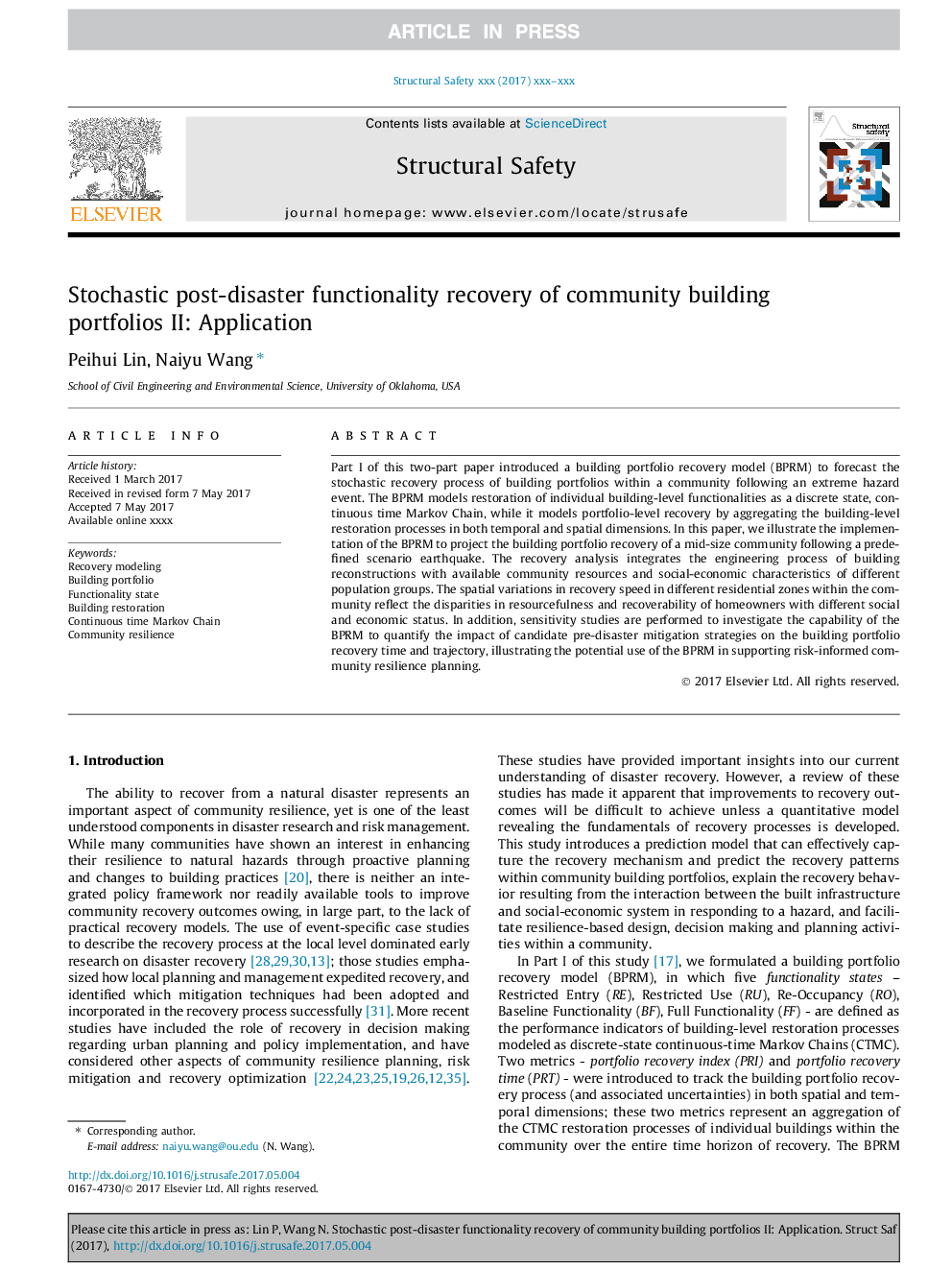| Article ID | Journal | Published Year | Pages | File Type |
|---|---|---|---|---|
| 4927797 | Structural Safety | 2017 | 12 Pages |
Abstract
Part I of this two-part paper introduced a building portfolio recovery model (BPRM) to forecast the stochastic recovery process of building portfolios within a community following an extreme hazard event. The BPRM models restoration of individual building-level functionalities as a discrete state, continuous time Markov Chain, while it models portfolio-level recovery by aggregating the building-level restoration processes in both temporal and spatial dimensions. In this paper, we illustrate the implementation of the BPRM to project the building portfolio recovery of a mid-size community following a predefined scenario earthquake. The recovery analysis integrates the engineering process of building reconstructions with available community resources and social-economic characteristics of different population groups. The spatial variations in recovery speed in different residential zones within the community reflect the disparities in resourcefulness and recoverability of homeowners with different social and economic status. In addition, sensitivity studies are performed to investigate the capability of the BPRM to quantify the impact of candidate pre-disaster mitigation strategies on the building portfolio recovery time and trajectory, illustrating the potential use of the BPRM in supporting risk-informed community resilience planning.
Related Topics
Physical Sciences and Engineering
Engineering
Civil and Structural Engineering
Authors
Peihui Lin, Naiyu Wang,
